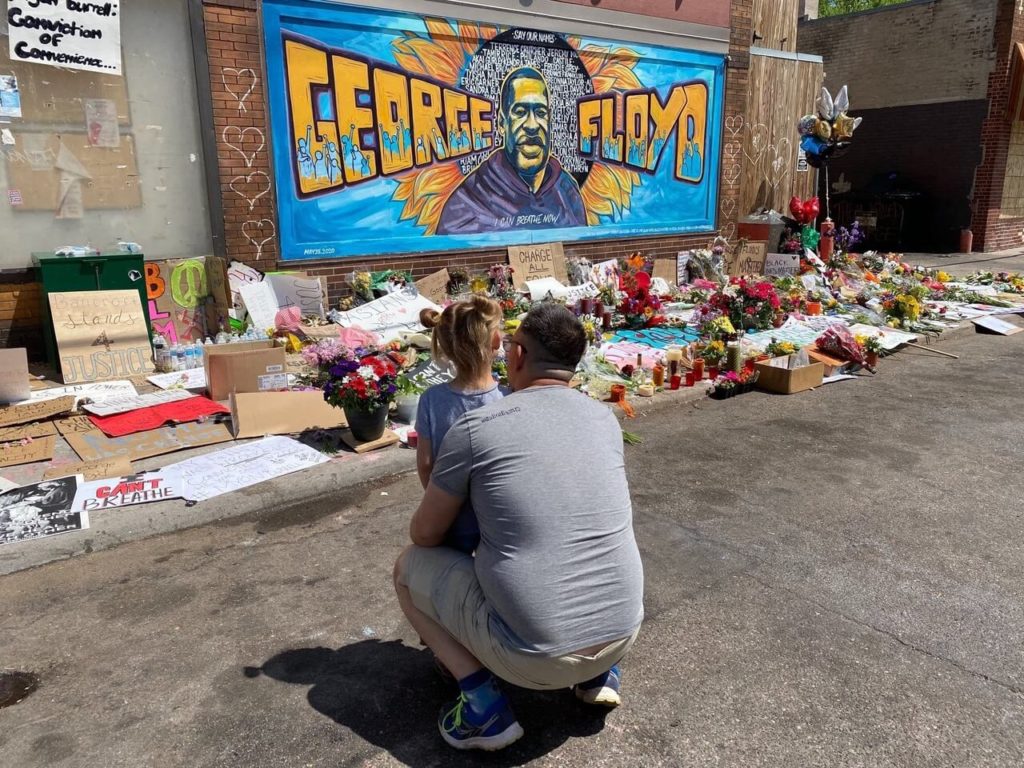Language evolves—especially in the United States—especially when it comes to terms referring to race. One of the most significant questions 2020 raised regarding race revolves around the capitalization of “Black” and “White.” Here’s a dive into the evolving perspective of the uppercase argument.
The Evolution of Terminology

Slavery began in the U.S. in the 1600s. What we consider the “correct” racial designation for people of African descent has evolved over the years to include:
- Negro
- colored
- Afro-American
- African-American
- African American
- Black (and its white counterpart)
- Black (White)
Culture determined the terminology and whether to capitalize or hyphenate words referring to race for many years. However, the word nerds who determine the suggested practices in the media and academic journalistic practices set forth new rules in June 2020. Why? Because of George Floyd.
George Floyd’s Influence

The George Floyd incident changed the way we look at Black Lives Matter and linguistic references to Black and White. Global newsflash: On May 25, 2020, George Floyd, a Black man, was killed during a police arrest in Minneapolis. Derick Chauvin, a White police officer, pinned Floyd to the ground and kept his knee on Floyd’s neck for almost nine minutes. Floyd’s famous quote “I can’t breathe” resounded around the world. The next day, all four police officers involved in the incident were fired. That same day, protests started. By June 6, half a million people participated in protests in 550 U.S. locations.
Meanwhile, the nerdy academic language style nerds were waging a quieter protest as they put their heads together to determine how to tell this story in “politically correct” terms, using appropriate capitalization.
How Did the Policy Regarding the Capitalization of “Black” and White” Change?

The style gurus representing newspapers, magazines, interest groups, and academicians convened and laid out their various guidelines so writers of all genres could get it straight. Here’s what we need to know for 2021.
Three factors determine your choices: the style guides you use for various projects, client preferences, and your conscience.
Chicago Manual of Style (CMOS)
Pre-George Floyd: Uselower case for black and white to refer to a person’s race or ethnicity “unless a particular author or publisher prefers otherwise.”
As of June 22, 2020: Write Black with a capital B; write White with a capital W (and similar terms to maintain consistency like Brown).
It is with a spirit of equity and with an eye toward future generations—and with a debt of gratitude owed to those who have led us here—that we embrace the changes . . . We hope you will embrace them too.
Chicago Manual of Style
Associated Press Style (AP)
Pre-George Floyd: Use lowercase for both black and white.
As of July 20, 2020: Capitalize Black in a racial, ethnic or cultural sense, conveying a shared sense of history, identity and community among people who identify as Black, including those in the African diaspora and within Africa.
Lowercase the term white in racial, ethnic and cultural senses.
After a review and period of consultation, we found . . . less support for capitalizing white. White people generally do not share the same history and culture, or the experience of being discriminated against because of skin color . . . AP is a global news organization and there is considerable disagreement, ambiguity and confusion about whom the term includes in much of the world.
Associated Press
American Psychological Society (APA)
Pre-George Floyd: Racial and ethnic groups are designated by proper nouns and are capitalized. Therefore, use “Black” and “White” instead of “black” and “white.”
As of June 18, 2020: Continue to capitalize Black and White.
Whenever possible, use the racial and/or ethnic terms your participants themselves use.
American Psychological Society
By the way, APA believes both Black and African American are acceptable but cautions against using African American as an “umbrella term” for people of African ancestry worldwide.
Modern Language Association (MLA)
Pre-George Floyd: Lowercase terms based only on color, customs, or local usage. That means black and white. Capitalize ethnic or racial groups if they represent a geographical region, like African American.
As of July 2020: The guidelines remain the same, although MLA’s references to nondiscriminatory language include consulting dictionaries and guides and being consistent.
The Savvy Red Pen’s Take on Capitalization

The Savvy Red Pen (Yes, that’s me.), who teaches first-year writing at the college level, asks her students to follow the Conscious Style Guide’s style points related to discrimination. She also advocates the Diversity Style Guide.
The Conscious Style Guide, launched by Karen Yin in 2015, didn’t wait for the George Floyd incident to delve into the subject of capitalizing black and white. And she doesn’t believe we should wait for a style guide to catch up. The Diversity Style Guide assembles definitions and information from more than two dozen style guides and other journalism organizations. Both suggest the capitalization of Black and White.
The theory behind these decisions is complex, and wordsmiths will continue to discuss them. The simple point is to use the style most appropriate for your media and your conscience. We call style guides guides for a reason. Capitalizing the initial letters in Black and White suggests more than just pressing the shift button; it represents a shift in thinking.
Want to stay current with language trends? Subscribe to the Savvy Red Pen Blog.
We also offer a full line of editorial services for authors, students, and businesses. Contact us today to learn more.

